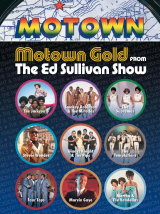
By Maurice Berger, For All the World to See project director and curator
In a series of short essays published over the next year, I will examine recent efforts by scholars, artists, writers, and producers to rethink the visual culture of the civil rights movement. First up: my take on the set of exceptionally entertaining DVDs of Motown acts on The Ed Sullivan Show, produced by SOFA Entertainment. In the 1960s, the Sullivan show regularly booked African American artists from a then small record company from Detroit founded by Berry Gordy Jr. in 1960--Motown--introducing the nation to most of the company’s acts and helping to turn Motown into a national institution. One compilation from the set—Motown Gold from The Ed Sullivan Show—presents scores of thrilling performances, from such notable singers and groups as The Supremes, Four Tops, Gladys Night and the Pips, The Jackson 5, Marvin Gaye, Smokey Robinson and the Miracles, Stevie Wonder, and the Temptations. Two more discs—The Best of the Temptations and The Best of the Supremes—pay homage to popular Motown acts who appeared regularly on the program. Collectively, the DVD collection offers a sustained picture of a group of entertainers who profoundly influenced American popular culture of the 1960s.
In the context of For All the World to See and its soon to open NEH on the Road iteration—both exhibitions include a section of 21-historic clips of African American performers on the Sullivan program—the Motown DVDs help us to understand, while simultaneously entertaining us, the vital role played by African American artists, as well as Ed Sullivan himself, in advancing the cause of civil rights. If prime-time dramas and situation comedies of the civil rights era rarely featured African-American actors or subject matter, The Ed Sullivan Show, as well as several other groundbreaking variety programs of the period, actively showcased black acts. Sullivan’s weekly variety hour, broadcast live on Sunday evening, was a civil rights trailblazer, granting unprecedented visibility to African-American entertainers who were often invisible in mainstream popular culture.
The most successful variety-hour on American television, the Sullivan show introduced a generation of Americans to a broad array of artists. Despite ongoing battles with conservative sponsors, Sullivan, the show’s producer and host, created an early and reliable forum for African-American singers, actors, and comedians. By showing black and white performers interacting as equals, and by bringing these entertainers into the homes of millions of Americans on a weekly basis, the program, as well as Sullivan himself, set an example of racial acceptance and integration, not just for the entertainment industry but for the nation at large.
In the end, The Ed Sullivan Show advanced the cause of civil rights by enfranchising African American performers, from its inception in 1948 to its last show in 1971. For black viewers, such performances were a source of pride and mainstream validation. For all viewers, these shows demonstrated the promise and desirability of integration by presenting black and white professionals interacting as equals. As powerfully as any contemporary exploration of black entertainers in the civil rights era, SOFA Entertainment’s Motown collection foregrounds this relatively under-represented aspect of civil rights history—reminding us of the power of gifted African American artists, a determined producer-host, and television itself, a relatively young medium at the time, to change the world.
Next up: scholar Christine Acham's groundbreaking study, Revolution Televised: Prime Time and the Struggle for Black Power (University of Minnesota Press, 2005)